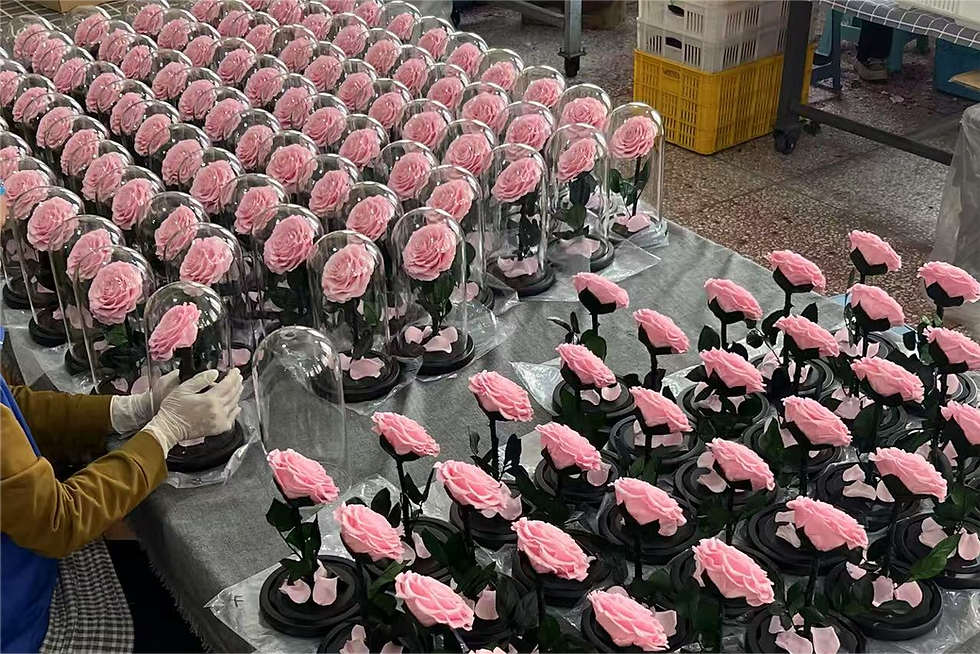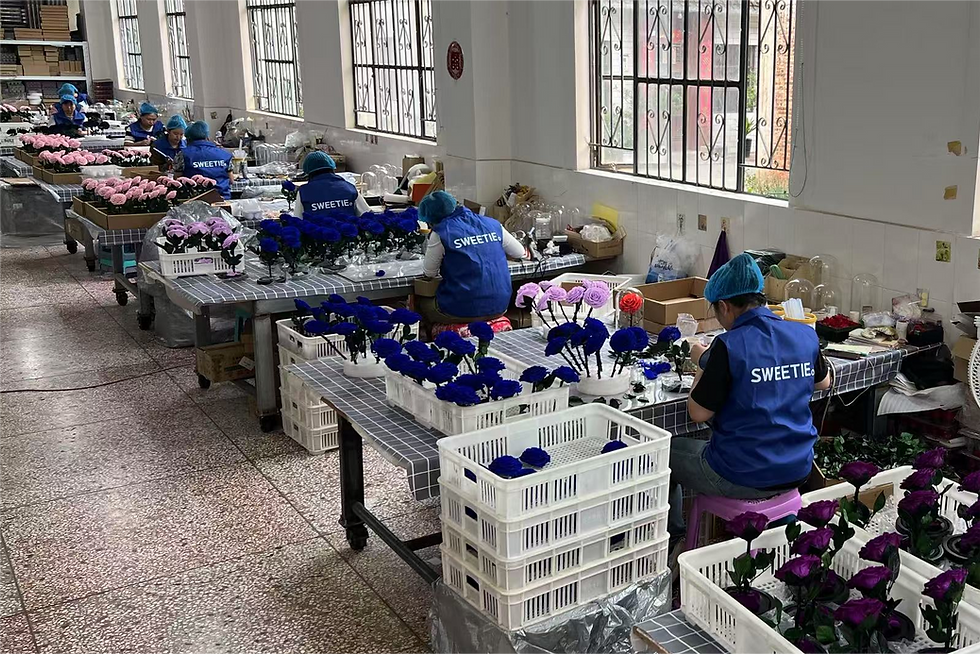Preserved Roses for Amazon Sellers: Compliance, Margins, and Product Strategies That Work
- Annie Zhang

- Sep 3
- 4 min read

Most Amazon sellers already know preserved roses last longer than fresh flowers. That’s not the real question. The real question is: can preserved roses survive Amazon’s logistics, meet compliance, and still give you healthy margins?
In this article, I’ll go beyond the basics. I’ll share why preserved roses are gaining traction among Amazon U.S. sellers, where the real risks are, and how you can structure your product line to avoid costly mistakes.
Index:
Why Preserved Roses Fit Amazon Better Than Fresh Flowers
Fresh flowers face three problems on Amazon U.S.:
Perishability – They can’t sit in FBA for weeks.
Logistics barriers – Cold-chain isn’t practical for most sellers.
Low margins – By the time you add freight, wastage, and Amazon fees, profits shrink.
Preserved roses avoid all three. They are non-perishable, shelf-stable, and positioned as high-value gifts. That’s why sellers see higher margins: preserved roses can retail at $30–$100+, while still keeping logistics simple.

Where Amazon Sellers Usually Fail with Preserved Flowers
Based on my observations in the U.S. and EU markets, here are the top mistakes sellers make:
Ignoring packaging compliance: Glass domes and acrylic boxes often fail Amazon’s drop or compression tests. The rejection rate is much higher than standard gift items.
Too many SKUs, no focus: Sellers list 20+ variations but fail to optimize keywords, reviews, or logistics, spreading themselves thin.
Poor differentiation: Many listings use the same black round box with red roses. On Amazon, that means price wars.
Overlooking certificates: U.S. customs can hold shipments without phytosanitary paperwork, delaying time-sensitive campaigns like Valentine’s Day.
Compliance in Practice: Vendor Self-Testing for Preserved Flowers
Amazon’s Vendor Self-Testing isn’t just a formality. For preserved flowers, here’s what it really means:
Drop Tests: Our tests show that domes taller than 18 cm are most likely to crack. That’s why we reinforce with EVA inserts and double cartons before scaling a SKU.
Vibration Tests: Lightweight decorative add-ons (like pearl strings or LED lights) often detach. We secure them with tested adhesives rated for long-haul shipping.
Compression Tests: Luxury gift boxes under 600 gsm cardboard tend to collapse. We developed custom paperboards that pass Amazon’s compression without increasing shipping weight
By solving these pain points upfront, Sweetie-Gifts ensures sellers don’t waste money on failed inbound shipments.

The Profit Equation: Why Preserved Roses Work
Amazon sellers care about margins. Here’s a simplified comparison:
Item Type | Avg. Shelf Life | Inbound Risk | Retail Price Range | Margin Potential |
Fresh Flowers | 3–7 days | High (perishables not FBA-friendly) | $25–$60 | Very low |
Generic Gifts (mugs, plush toys) | 2+ years | Low | $10–$30 | Low–medium |
Preserved Roses | 12–36 months | Medium (fragile packaging risk) | $30–$100+ | High |
The key? Fragility can be managed, but perishability cannot. That’s why preserved roses sit in the sweet spot: premium perceived value with solvable compliance risks.
Differentiation: How to Stand Out on Amazon
Most preserved rose listings look the same. To compete, you need:
Unique formats – Beyond round boxes, think jewelry boxes, domes with figurines, or hybrid “flower + gift” bundles.
Brand storytelling – Buyers choose gifts that “say something.” We help create custom inserts and cards that add emotional value.
Holiday-focused SKUs – Amazon traffic spikes around Valentine’s, Mother’s Day, Christmas. Tailoring designs to these moments boosts conversion.
Sweetie-Gifts has already co-branded preserved flower products with Armani, Dior, and Pandora. We know how to merge flowers with fashion, jewelry, and cosmetics—formats Amazon buyers actually pay attention to.
Supply Chain: Timing Is Everything
For Amazon sellers, timing is the real challenge. If Valentine’s inventory arrives February 10 instead of January 25, you’ve already lost. That’s why we built capacity in multiple factories:
Kunming (Yunnan): Preserved flower production, 3,000 units/day.
Yiwu: Soap flowers and rose bears, 4,000 units/day.
Packaging tested for FBA: Every design is pre-checked for compliance before mass production.
This ensures sellers can plan campaigns with confidence instead of gambling on late shipments.

Why U.S. Amazon Sellers Choose Sweetie-Gifts
19+ years industry experience: We understand U.S. consumer gift trends.
Amazon-ready packaging: Designed to pass Vendor Self-Testing.
Certificates included: REACH, CE, phytosanitary.
Custom designs: From one-rose minis to 99-rose domes.
Want to test preserved roses for your Amazon store? Email us at sales@sweetie-group.com. We offer small MOQ trial runs so you can validate demand before scaling.
Final Thoughts
Preserved roses are not “just another gift.” For Amazon sellers, they represent a profitable category with built-in differentiation, if—and only if—you solve compliance and packaging challenges.
At Sweetie-Gifts, we’ve already done the hard work: tested packaging, scalable production, and creative product formats. That’s why our partners trust us to deliver floral products that sell, not just look good.
If you’re ready to expand into preserved roses on Amazon, contact us at sales@sweetie-group.com. We’ll help you design, package, and deliver products that clear Amazon’s hurdles—and win customers.

CEO of Sweetie-Group









Comments